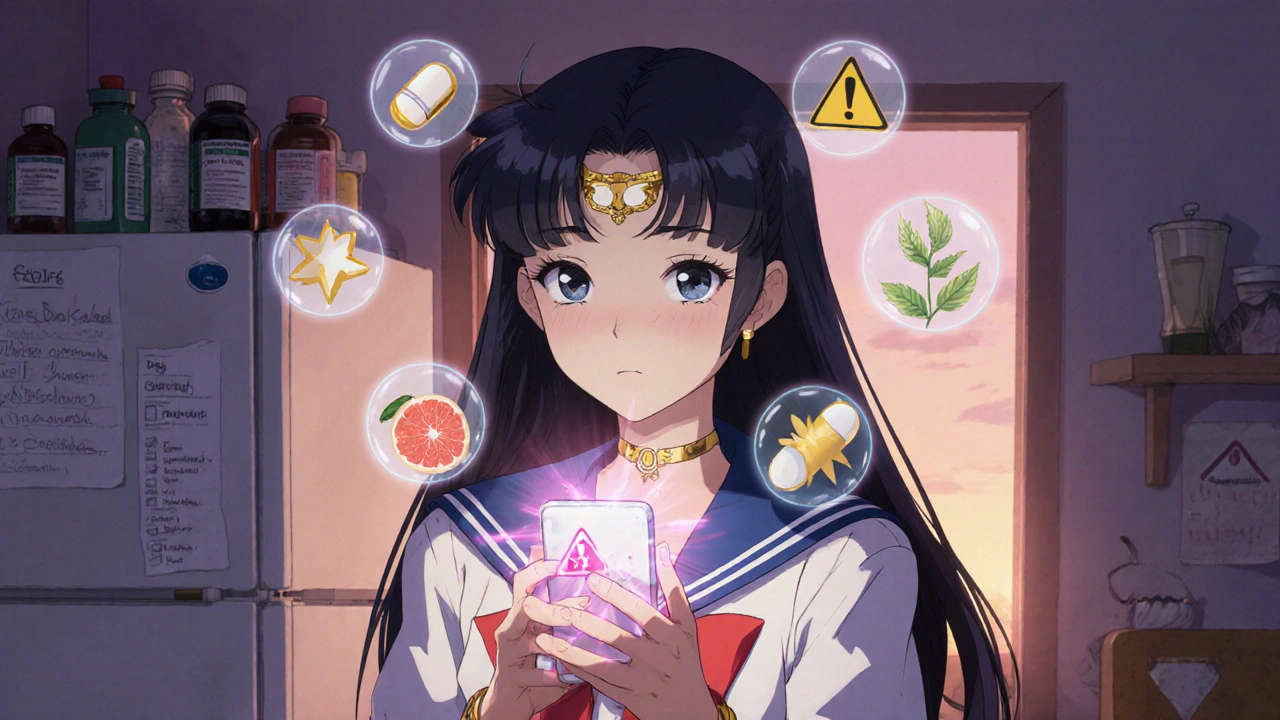Drug Interactions – What They Are and How to Avoid Trouble
If you take more than one medication, the chance of a drug interaction shows up fast. An interaction happens when two or more medicines affect each other’s action, often changing how well they work or causing unwanted side effects. It can be as simple as a headache from a coffee‑type pain reliever mixed with an antidepressant, or as serious as heart rhythm problems caused by certain antibiotics and blood thinners.
Why You Should Care About Interactions
Most people think only prescription pills matter, but over‑the‑counter drugs, supplements, and even food can join the mix. A common example is grapefruit juice raising the level of some cholesterol meds, which can stress your liver. Another frequent combo is ibuprofen with blood pressure medicines – it may blunt the BP‑lowering effect and irritate the stomach.
When interactions slip through, you might feel dizzy, get a rash, notice swelling, or see a sudden change in how a condition feels. In worst cases, hospitals are needed for severe reactions like bleeding or dangerous heart rhythms. Knowing what to watch for can keep those trips out of the ER.
Easy Ways to Check for Interactions
1. Ask your pharmacist. A quick chat before you pick up a new drug can reveal hidden risks. Pharmacists have databases that flag common trouble spots.
2. Use reputable online tools. Look for sites backed by national pharmacy boards or health agencies. Enter every prescription, OTC product, and supplement you take – the tool will highlight red flags.
3. Read the label. Many packages list major interacting drugs. If something looks unfamiliar, write it down and ask a professional.
4. Keep an up‑to‑date medication list. Write the name, dose, and timing for each product. Share this list with every doctor you see – they’ll spot conflicts before prescribing new meds.
5. Watch your body. If you start a new drug and feel unusual symptoms within a few days, note them and call your healthcare provider right away.
These steps take only minutes but can prevent weeks of trouble.
Remember, not every interaction is dangerous. Some medicines are meant to be taken together because they boost each other’s effect – think of certain HIV combos or blood‑clotting drugs with aspirin. The key is knowing which pairs are safe and which aren’t.
If you’re unsure about a supplement like St. John’s wort, check it first. It’s famous for messing up many antidepressants and birth‑control pills. Even herbal teas can matter – some people find that large amounts of green tea affect blood thinners.
In short, treat every new drug like a puzzle piece. Fit it into your existing regimen only after checking the picture. A quick phone call or online check today saves you headaches, hospital visits, and wasted money later.
Stay on top of your meds, keep that list handy, and never assume “natural” means “harmless.” Your health stays in your hands when you stay informed about drug interactions.

Combining sedating medications like opioids, benzodiazepines, and alcohol can dangerously slow breathing and lead to overdose. Learn the warning signs, high-risk combinations, and how to protect yourself.
Read More
Learn how to safely check for drug interactions at home using free, reliable tools. Avoid dangerous combos between prescriptions, OTC meds, and supplements with step-by-step guidance and expert-backed tips.
Read More
Licorice may seem harmless, but its active ingredient, glycyrrhizin, can dangerously raise blood pressure, lower potassium, and interfere with common medications. Learn which drugs interact with licorice and how to stay safe.
Read More